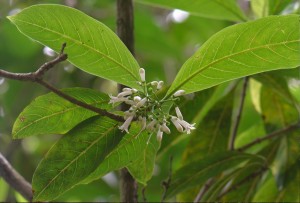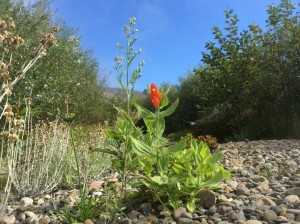Overview
Ultimately, abundance and distribution represent the summation of an array of different processes, acting at different levels of biological organization (e.g., genes, individuals, populations, lineages) and over different temporal and spatial scales (e.g., species interactions that regulate population densities vs. evolution of climate-niche properties that impact species distributions). However, a unifying theme in understanding variation in abundance and distribution may be found by identifying the factors most critical in setting limits on population abundance, geographic ranges, and diversity. For example, species’ filling of available ecological niche space (spatially manifested as geographic ranges) may be limited by failure to adapt to novel conditions, by dispersal, or by species interactions. These limits to distributions act, in turn, to regulate the diversity of biogeographic regions and clades by defining the metacommunity and ecological context in which species and clades evolve.
Much of our research focuses on two diverse plant genera, Psychotria (Rubiaceae) and Mimulus (Phrymaceae). We use these genera (and their close relatives) as model lineages to understand biogeographic patterns and phylogenetic diversity, species range limits, and climatic niche evolution.
Psychotria
The genus Psychotria is one of the most diverse plant genera known in the world. I spearheaded work on the Neotropical species of this group during my dissertation. I showed that the geographic ranges of species in this group are limited by their evolutionary age – species that are older have had more time to disperse across the landscape, and as result, older species have larger geographic ranges than younger species (Paul et al. 2009). Recently, with colleagues from the Missouri Botanical Garden and University of Michigan, we showed that Neotropical species of Psychotria and a related lineage, Palicourea (collectively known as the clade Psychotrieae) evolve slowly in their climatic niche characteristics, despite having moved over vast distances of Neotropical rainforests over millions of years (Sedio et al. 2013). Hence, these species’ ecological niche characteristics are conserved for vast degrees of time and space. This research is important for understanding how organisms may respond to current changing climate conditions and suggests that in lineages like Psychotria, it may be much easier to disperse (to track favorable ecological conditions) than to evolve (to change the ecological niches of species to novel ecological conditions).
We are now investigating the Pacific radiation of Psychotria. We have been working updating and improving our understanding of the Hawaiian Psychotria diversification (Master’s student Elaine Zhang’s research). This work is in collaboration with Dr. David Lorence and Ken Wood of the National Tropical Botanical Garden, and Dr. Kenta Watanabe (Okinawa National College of Technology, Japan). We continue to work on the global Psychotrieae radiation with our colleague Dr. Charlotte Taylor at the Missouri Botanical Garden.
Mimulus
The geographic ranges of species consist of populations arrayed across a landscape. Why do range margins occur where they do? What factors are responsible for setting the geographic range limit of species? Many hypotheses have been proposed to explain why species have geographic range limits, and most hypotheses focus on the role of local adaptation, or the failure of it, in explaining margins. The idea is that the local environment at the margin of a species’ range may differ considerably from the environmental conditions in other parts of the range, and particularly the more central portions of a species’ range. Populations at the margin of a species’ range may fail at local adaptation for a number of reasons, including persistent small populations size, recurrent extinction and colonization that ‘resets the clock’ on local adaptation, or an influx of maladaptive alleles from the more central portion of a species range.
Understanding the genetic relationships of these populations is a fundamental goal of population genetics. Both contemporary and historical factors can play a role in structuring the genetic relatedness of these populations. Contemporary processes include gene flow between populations, selective pressures associated with local environment and ecology, and interactions with other species. Historical factors include the ages of populations, history of colonization, and historical demography (population size changes). Historical factors essentially establish the playing field in which contemporary process play out. Despite the intricate link between historical and contemporary processes in regulating the structure of geographic ranges, few studies have investigated both these critical aspects in a single taxon.
I started working on the perennial plant species Mimulus cardinalis, during my postdoctoral work with Dr. Amy Angert at Colorado State University (she is now at University of British Columbia, UBC). This wide-ranging Mimulus species is confined to watercourses and wet seeps, and shows limited morphological variation across it’s broad distribution. We have been investigating the drivers of range limits in this species, examining population genetic structure, occupancy, and demography across the range.


